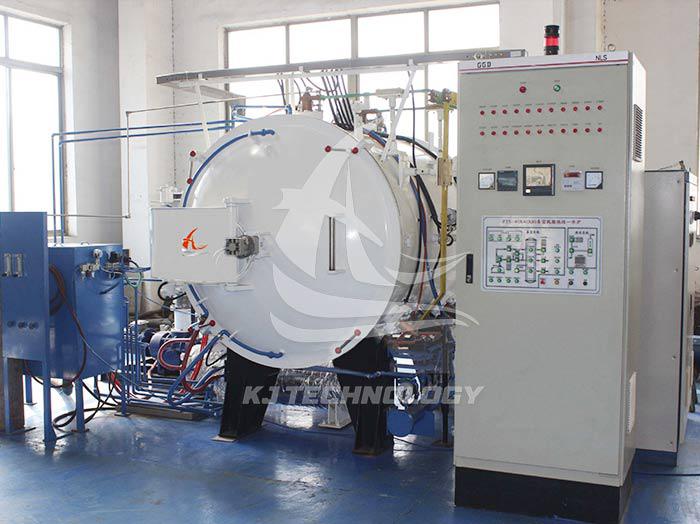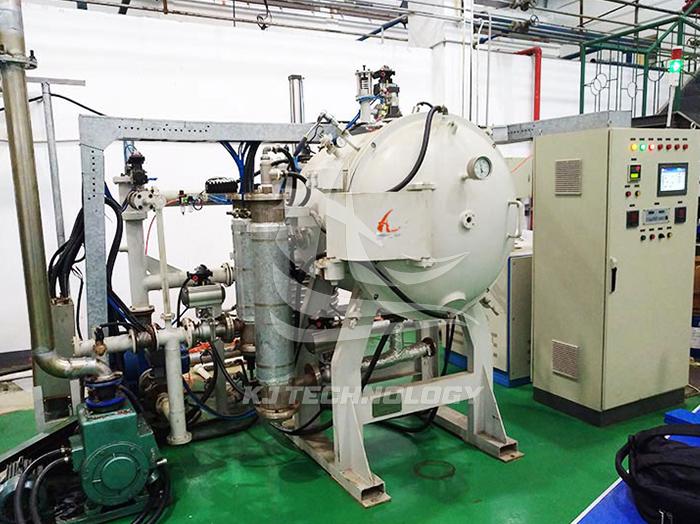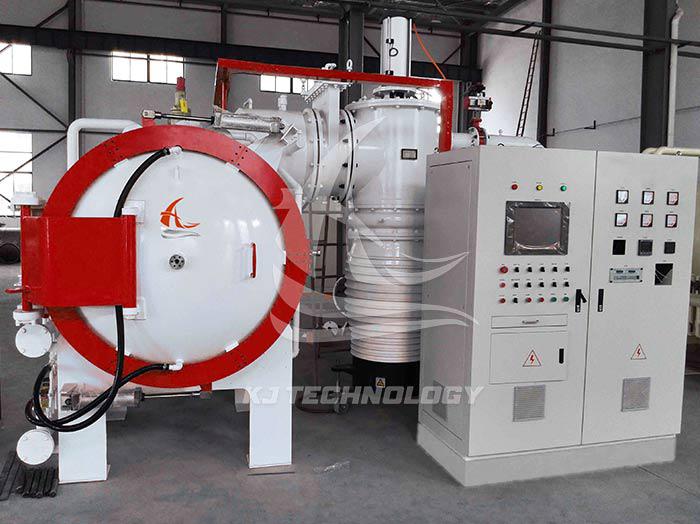Application of Vacuum Sintering Furnace in the New Energy Industry
 03-20-2025 Author: KJ technology
03-20-2025 Author: KJ technology
The application of vacuum sintering furnaces in the new energy industry is becoming increasingly widespread, mainly reflected in the following aspects:
1. Preparation of lithium-ion battery materials
a. Preparation of positive electrode material
Application: The positive electrode materials of lithium-ion batteries, such as cobalt oxide and lithium carbonate, have a direct impact on the energy density, cycle life, and safety performance of the battery. The vacuum sintering furnace can optimize the crystal phase composition and microstructure of positive electrode materials, improve their conductivity, ion diffusion rate, and cycling stability by precisely controlling sintering conditions such as temperature, time, and atmosphere.
b. Modification of negative electrode material
Application: Graphite is one of the main components of negative electrode materials for lithium-ion batteries. Vacuum sintering technology can improve the microstructure of graphite materials, enhance their conductivity and lithium insertion/extraction performance, thereby improving the capacity and cycling stability of batteries.
2. Preparation of Fuel Cell Materials
a. Preparation of electrode materials
Application: Electrode materials for fuel cells need to have good conductivity, catalytic activity, and stability. Vacuum sintering furnace can be used to prepare electrode materials for fuel cells, such as by precisely controlling sintering conditions, optimizing the composition and microstructure of materials, and improving the performance and stability of electrode materials.
b. Preparation of electrolyte materials
Application scenario: Electrolyte materials for fuel cells need to have high ion conductivity and low electronic conductivity. Vacuum sintering furnace can be used to prepare electrolyte materials for fuel cells, such as improving the density and ion conductivity of materials by optimizing the sintering process.
3. Preparation of solar panel materials
a. Improve photoelectric conversion efficiency
Application scenario: The key material for solar panels needs to have good photoelectric conversion efficiency. Vacuum sintering furnace can be used to prepare key materials for solar panels, such as by precisely controlling sintering conditions, optimizing material composition and microstructure, improving material light absorption and carrier mobility, thereby enhancing the photoelectric conversion efficiency of solar panels.
b. Preparation of high-performance thin film materials
Application: Thin film materials are commonly used in solar panels to improve photoelectric conversion efficiency. Vacuum sintering furnace can be used to prepare high-performance thin film materials, such as achieving uniform densification of thin film materials and improving their mechanical properties and stability by precisely controlling sintering conditions.
4. Preparation of other new energy materials
a. Preparation of permanent magnet materials
Application: Rare earth permanent magnet synchronous motor is one of the mainstream technologies for driving motors in new energy vehicles. Permanent magnet materials such as neodymium iron boron can form a more uniform crystal structure during vacuum sintering, improving their magnetic properties and heat resistance, thereby meeting the requirements of high power density, high efficiency, and strong reliability for new energy vehicle drive motors.
b. Preparation of new fiber composite materials
Application situation: New fiber composite materials have broad application prospects in the new energy industry. Vacuum sintering furnace helps to improve the interfacial bonding performance of composite materials, enhance their mechanical properties and thermal stability, and provide strong support for the lightweight design of new energy vehicles.
5. The advantages of vacuum sintering furnace in the application of new energy industry
a. Improve material performance
Advantage analysis: The vacuum sintering furnace operates in a vacuum environment, which can prevent the material from reacting with impurities such as oxygen and nitrogen in the air, thereby maintaining the purity and performance of the material. Meanwhile, vacuum sintering furnaces can provide precise temperature control and uniform heating environment, which helps optimize the composition and microstructure of materials and improve their performance.
b. Energy conservation and environmental protection
Advantage analysis: The vacuum sintering furnace has minimal heat loss during the sintering process and does not require the use of protective or reducing gases, reducing energy consumption and production costs. In addition, vacuum sintering furnaces can also reduce gas emissions and waste generation, meeting the requirements of environmental protection and sustainable development.
c. High degree of automation
Advantage analysis: Modern vacuum sintering furnaces usually have high automation functions, which can achieve automated operations, data recording, and process control. This can not only improve production efficiency and quality stability, but also reduce manual intervention and operational errors.
In summary, the application of vacuum sintering furnaces in the new energy industry has broad prospects and significant advantages. With the continuous development and innovation of new energy technologies, vacuum sintering furnaces will play an important role in more fields.








